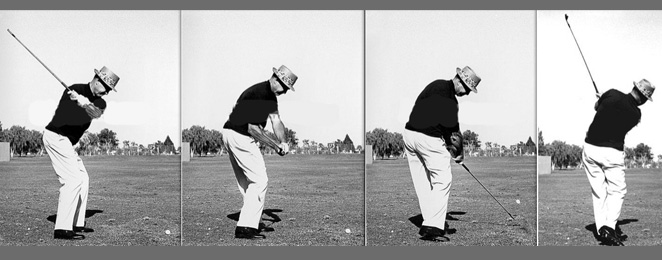Have you heard of “one and two plane swings” yet?
Meaning swings with one or two swing planes?
Shoot Low Scores
Have More Fun
Sign up for our free email newsletter (Good at Golf Academy). It is jam-packed with the best golf instruction insights: Including “Road to Scratch“, “Long Drive Champion Secrets“, “Consistency Blueprints“ and “The Big Lesson From the Lesson Tee“.
[mailpoet_form id=”3″]Yes, it’s completely free.
Join hundreds of other happy golfers or read more about what’s inside
This time I want to take a closer look at these two swing types.
If it’s good to categorize and give names everything we’ll leave undecided for now.
Jim Hardy’s categorization in his book “The Plane Truth” has led to a lot of discussion among teaching pros.
I personally don’t think that you can divide all golfers into two groups but understanding the fundamental differences between the described swing types can help when you are working on your golf swing.
The main difference between the two swing types lies in particular in the way how you accelerate your club in your downswing.
Let’s find out what your swing type is! [clearboth]
Categorization
What Jim Hardy does is nothing else than describing the relationship between the angle of your arms, body and golf ball during the golf swing.
These angles are being called planes.
If your planes are identical during your swing you’ve got a “one plane swing”.
If they differ you’ve got a “two plane swing”. In reality identical planes are very rare. That’s why there is a range of tolerance between the planes.
The rule of thumb for a “one plane swing” is the left arm forming a line with your right shoulder at the end of your upswing.
In a “two plane swing” the left arm is a lot steeper.
Often you can see which type of a golfer is before he even begins to swing.
If his setup and posture is relatively upright the golfer will swing steeper due to a flatter shoulder turn (“two plane swing”). If his posture is more bend over he will swing his arms more around his body on one plane (“one plane swing”).
Which swing type is better is a discussion in it’s own. Luke Donald is a “two planer” Rory McIlroy is a “one planer”.
The decision if you want to be a Donald-Type or a McIlroy-Type is yours alone.
It can get problematic if you try to mix the two swing types. Although many professional golfers incorporate aspects of both types into their swings.
One Plane Swing
A “one planer” has a bigger spine angle in his setup and his hands a little farther away from his body.
He swings with relatively little head movement and shifts his weight more around his body.
The downswing starts with a dynamic body-turn and passive arms. He hits with his right side through the ball.
The picture above shows Sam Snead performing a “one plane swing”.
Two Plane Swing
A “two planer” stands more upright towards the ball and has his hands closer to his body.
The body turns on a flatter plane and the arms travel on a steeper plane upwards.
The weight shifts more on to the right foot and the head moves more behind the ball. The downswing starts with a relatively passive turn of the body and more active arms.
The weight shifts to the left and the club releases more around the wrists thus generating a stronger rotation of the forearms.
This leads to the “two plane golfer” to rely more on good rhythm and timing than the “one planer”.
Your Swing Plane – Your Swing Type
Your body type and age are vital points to decide your swing type. For taller players or golfers with back problems the “two plane swing” is usually a better option.
If you are a young and flexible golfer you will probably have more control with the “one plane swing”.
I suggest that you ask your local pro to analyse your swing type.
There is no real reason to change your swing type despite if you don’t get along at all and have fundamental swing problems. Often enough golfers make their lives hard by learning technique that doesn’t fit their personal swing type.
By knowing your swing type and sticking with your tendencies you can avoid a lot of frustration and trouble on the course.



Leave a Reply